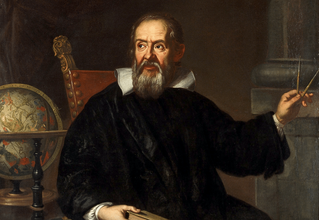Book Review: Wonders of the Universe

I finished reading the book: Wonders of the Universe (The World Book) earlier this year. This is an older astronomy book from ~30 years ago, but I decided to re-read it again this year. I had this book since childhood, but had lost it over the years until I found it again this year in a pile of books located in the house. I last saw this book probably ~20 years ago, and I was definitely surprised my family kept it all these years. This book is from The World Book Encyclopedia, which is a resource I used to read voraciously in middle school. There was a World Book app on the Apple laptop my school allowed us to use, and I would read it all the time. I read it as an escape, given that I didn’t go out much nor was I involved in too many after school activities. Astronomy was one of my favorite subjects growing up and to be working in astrophysics today, it really has come full circle.
The book is pretty well organized and goes over three areas: 1) The history of astronomy, 2) the solar system, and 3) the universe beyond the solar system. As someone who works in area 3), the sections of the book on nebulae and the birth of stars, supernovae and neutron stars, and quasars was very interesting. All the astrophysics presented was pre-Hubble, and so much more has been discovered since the book’s publication. There were a lot of technical details in the book that I appreciated, but I don’t think I fully understood everything deeply, given that I’m a citizen scientist. I didn’t find section 2) on the solar system that interesting because I already know a lot about the solar system. I’ve learned a lot about the solar system in school, as well as through all the science lectures that I went to over the years. There were a lot of rich details about individual planets from Mercury all the way to Pluto, which is no longer deemed a planet by the International Astronomical Union (IAU). As of 2006, Pluto is now considered a Keiper belt dwarf planet and not a true planet. Some facts I found interesting in these two sections include:
- The sun is powered by nuclear fusion and will continue to provide light and energy to earth for ~5 billion years before it experiences its death as a star. This is reassuring!
- Mars has channels that resemble riverbeds, but no water has ever been discovered on Mars. It points to the possibility that during Mars’ creation, water was once present.
- The four Galilean moons of Jupiter are: Io, Europa, Ganymeade, and Callisto, where Europa has an icy surface; beneath the surface lies possibly oceans of water. An interesting moon to explore, which is what the NASA Europa Clipper mission will do (launched on 10/14/24).
- A supernova occurs when a massive star expands into a supergiant and suddenly explodes. At the center of a supernova you often find a pulsar, which is a spinning neutron star that’s left over from the explosion. Pulsars emit electromagnetic radiation that’s observed on earth as pulses of light.
- Quasars are extremely bright stellar objects extremely far away located at the core of a distant galaxy. The quasar is powered by the gravitational force of a black hole as the stellar object is added into the black hole.
I think I found section 1) the history of astronomy to be the most interesting section in the whole book. Some may not know this, but astronomy is the oldest science; the stars in the night sky are something that human civilizations have wondered about for millenia. I love how the history goes over all the ancient civilizations that studied astronomy: the Babylonians, the Egyptians, the Greeks, Nicholaus Capernicus and the Copernican revolution, Galileo Galilei and the Italian renaissance, and Isaac Newton and the age of modern astronomy. It tells the story of how over the course of time, humans understood the cosmos better with newer and more enhanced methods of scientific discovery. I was inspired by the story of Galileo Galilei, who suffered greatly as a revolutionary thinker; I did not know much about Galileo previously. Galileo was tried by the Roman inquisition and put under house arrest for teaching the Copernican theory (heliocentrism), which posits that the sun and not the earth is the center of the universe and the planets revolved around the sun. Heliocentrism was totally revolutionary at the time and for sticking to his beliefs, Galileo risked being burned alive at the stake. Revolutionary thinkers are often not appreciated until they are gone and often suffer deeply for their beliefs. I respect anyone who is willing to stick to their principles and advocate for what they know is the truth, no matter what the costs are.

I’m inspired by all the people that came before me, and in a way I view myself as someone who’s continuing the legacy of Galileo Galilei, Nicholaus Copernicus, Isaac Newton, and countless others. I work in astrophysics and fully appreciate all the history and all the work that great people have done up to this point. It was only through their work that we’ve made so much advancements in astronomy. As said in latin: valēre means to be strong and I must continue to be strong and to keep going, just like my heroes did. They suffered and sacrificed everything for what they believed in. I will also try to make an impact and we’ll see what happens!